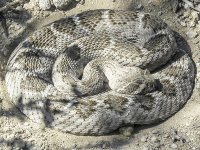-
Hello!
Either you have not registered on this site yet, or you are registered but have not logged in. In either case, you will not be able to use the full functionality of this site until you have registered, and then logged in after your registration has been approved.
Registration is FREE, so please register so you can participate instead of remaining a lurker....
Please be certain that the location field is correctly filled out when you register. All registrations that appear to be bogus will be rejected. Which means that if your location field does NOT match the actual location of your registration IP address, then your registration will be rejected.
Sorry about the strictness of this requirement, but it is necessary to block spammers and scammers at the door as much as possible.
You are using an out of date browser. It may not display this or other websites correctly.
You should upgrade or use an alternative browser.
You should upgrade or use an alternative browser.
Western Diamondback or Mojave?
- Thread starter David Pinter
- Start date
Hearts-a-Glow
New member
I don't know for certain, but living in California I can tell you the Mojave is usually going to look more green than the Western. The diamond pattern fades are you get close to the tail on the Mojave (can't see in this picture) while on the Western it's pretty consistent throughout with minor fading.
HerpsOfNM
My name's Blurryface...
From the looks of the head scalation, that's an atrox (WDB).
Head scalation (enlarged between the supraoculars in mohaves) and tail banding (white and black bands are approx. 50/50 in atrox, with the white 2x wider than the black in mohaves) are the most reliable methods of identification between atrox and scutulatus. Some examples that contradict fading for IDing:





I don't know for certain, but living in California I can tell you the Mojave is usually going to look more green than the Western. The diamond pattern fades are you get close to the tail on the Mojave (can't see in this picture) while on the Western it's pretty consistent throughout with minor fading.
Head scalation (enlarged between the supraoculars in mohaves) and tail banding (white and black bands are approx. 50/50 in atrox, with the white 2x wider than the black in mohaves) are the most reliable methods of identification between atrox and scutulatus. Some examples that contradict fading for IDing:





HerpsOfNM
My name's Blurryface...
Great pics!!
I try. :dgrin: Took me a while to get my site back up a running. But these and all my other NM herp pics are up once again.

